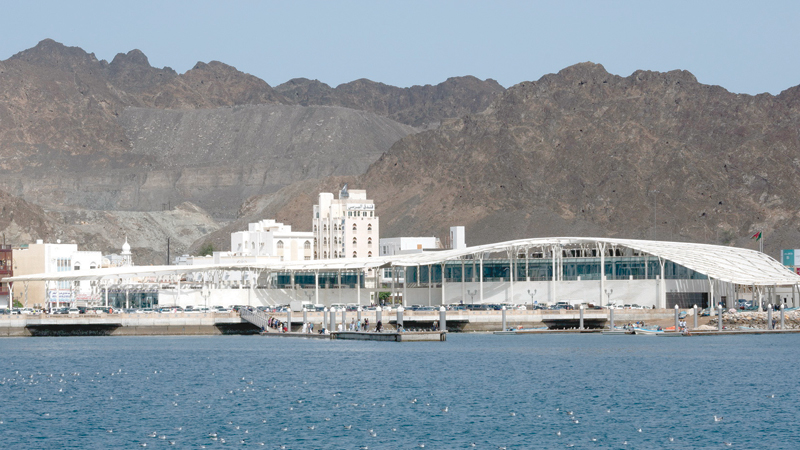

What is it that, while firmly rooted in time and place, transcends time? It’s art. In fact, it’s architecture, to be more precise. The Sultanate, with its awesome mountain ranges, deserts and the three seas that make its impressive coastline, constantly reminds us to transcend the dimension of time and attain a perfect state of enlightenment. But that is nature’s way of doing things. Even humans can do that, though there is bound to be a difference in intensity, something on the lines of what differentiates a honeymoon from a minimoon...
The innovative Muttrah Fish Market, designed by Norwegian firm Snøhetta, is one such human endeavour where timelessness forms a defining attribute of the structure. Built on 4,000 sq m, it stands out in the area as the pinnacle of architectural aspiration aimed at blurring what our minds perceive to be the present, past or future.
And if we don’t allow ourselves to slip into the shopping, bargaining and buying process, and rather choose to look out into the turquoise waters of the Sea of Oman, we can easily experience the meditative mind of a fish. Thus we realise that, apart from nature, not just geniuses of the order of Salvador Dali, but number-and-geometry-obsessed architects too can create surreal experiences.
The market’s double radial wall is uniquely modelled on the spine of a fish. Also, it reflects the area’s curved landscape. And the beauty is that the new fish market never intends to wipe out the vibes of the fishing trade and tradition that enlivened the old fish market that had been operating in the area since 1960. The structure honours light and shadow in equal measure along with spatial emptiness. Over a hundred fishmongers and other workers as well as vegetable vendors peacefully conduct their business there. The market also has modern facilities for refrigeration, storage and packaging and eating joints.
The iconic architecture of the new Muttrah Fish Market serves as a crucial link that connects Oman’s traditional fishing to international tourism. With the Muttrah Water Front under development nearby, Muttrah could be one of the choicest tourist destinations in the Sultanate.
No wonder, the Muttrah Fish Market has been shortlisted for the 14th cycle (2017-19) of the prestigious $1million Aga Khan Award for Architecture. The triennial award, according to the Aga Khan Development Network, recognises examples of architectural excellence in the fields of contemporary design, social housing, community improvement and development, historic preservation, reuse and area conservation, as well as landscape design and improvement of the environment.
Revisiting the nagging question of whether architecture belongs to the realm of art, does the Muttrah Fish Market answer it convincingly? Accepting Frank Zappa’s observation that art is ‘making something out of nothing (and selling it),’ and the general definition of architecture as ‘the process of designing and constructing buildings’, it may be safely assumed that architecture is no different from art. While art caters to itself first, and then possibly connects with society, architecture is intrinsically linked to society where it is built. It is just an expanded form of art in terms of its functionality.
But there are loud voices that differentiate art from architecture. For instance renowned architect Patrik Schumacher feels architecture is not a l’art pour l’art discipline, and it is not art, although form (of the built structure) is architect’s specific contribution to the evolution of world society. But such arguments are contested by the likes of Edward Warder Rannels who poses that architecture should be studied as an art form. Rannels says, “First of all, we see architecture as an art form, a material realisation of artistic concepts and purposes, as in the case with other art forms such as sculpture and painting, or for that matter, poetry and music.”
The simple point is that art can be for itself, and sometimes it can be for both itself and society. In the latter case the artwork is called by a special name: architecture.
As for the Muttrah Fish Market, it could well be art-itechture. What else?
Oman Observer is now on the WhatsApp channel. Click here



